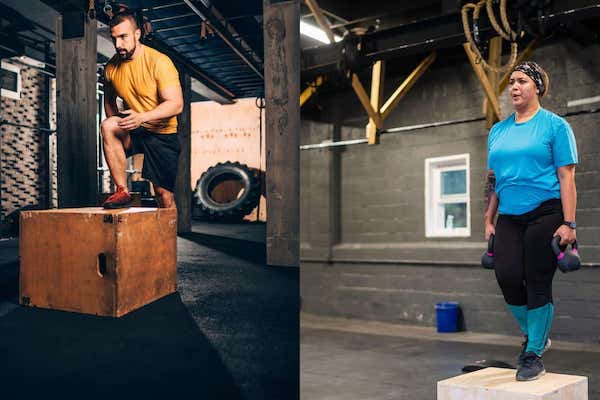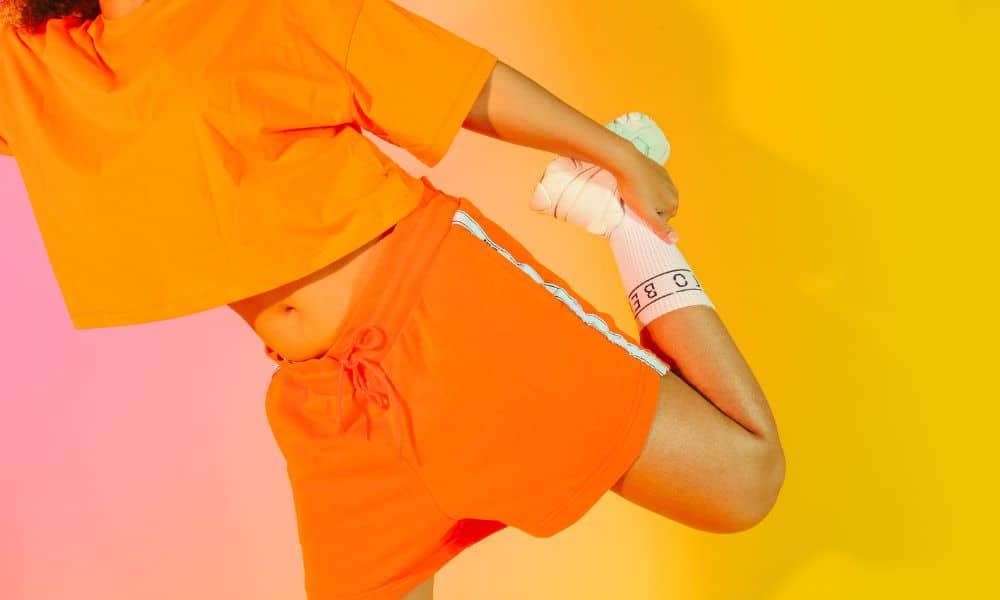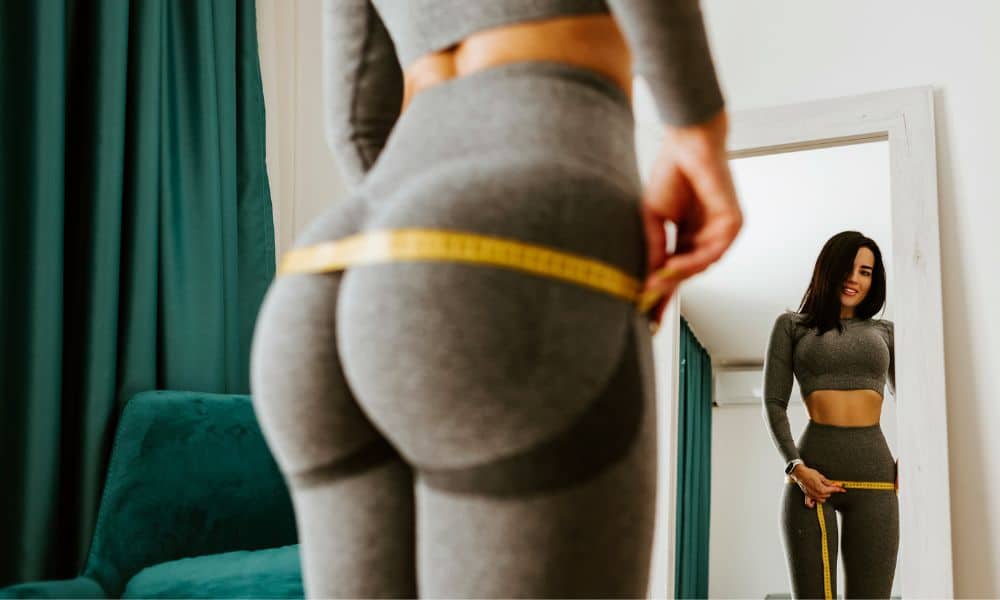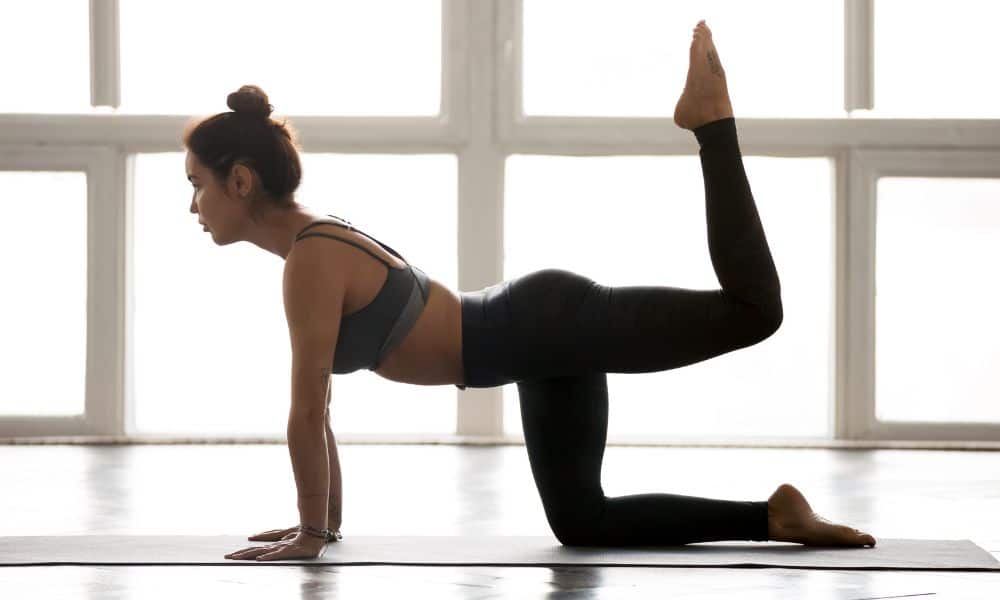Are you curious about the best glute exercise to increase lower body power? Of course, it takes effort to have the firmest, good-looking butt. But, you may also think, why would anyone want to know the best exercises and workouts to achieve this?
But, truthfully, if you weren’t interested, you wouldn’t be searching for or reading this article. So, dive in.

Glute Workout
Your glutes comprise three different muscles. These include the gluteus maximus (the most prominent muscle), the gluteus medius, and the gluteus minimus. You’ll have to read elsewhere if you’re looking for more science.
Instead, we will focus on workouts and activities you can do to strengthen these muscles. Strong glutes can help your posture and improve the efficiency of your workouts.
Best Glute Exercises
If you want to target your glute muscles, here are some exercises to help you get started.
Squats
Squats are the best glute exercise for increasing lower body power. Fun fact: this is the most significant muscle in the lower body. Squats also work your hips, thighs, calves, and core.
How to do squats:
- Stand with your feet hip distance apart. For added intensity, hold weights at shoulder level or your sides.
- Bend your knees and lower into a squat. Keep your knees behind your toes (imagine that you’re sticking your butt out behind you, but keep your torso upright and contracted).
- Press into your heels to stand.
- Repeat for 2 to 3 sets of 8 to 16 reps
Also, this is how to do a basic squat. However, many other, more complicated versions exist if you’re up for the challenge.
Lunges
Lunges are a popular glute exercise. In this staggered stance, you must use your glutes to stabilize yourself. Also, this forces the muscles on the front of your legs to work harder. Lunges are also suitable for working your hamstrings, quads, and calves.
How to perform lunges:
- Stand with your feet staggered, one foot forward and one foot back (about 3 feet apart).
- Bend both knees and lunge straight down, sending your back knee toward the floor.
- Try not to lunge forward over your front toes. Instead, keep your front heel on the ground.
- Press into your heel to stand.
- Repeat for 1 to 3 sets of 12 to 16 reps.
There is a variety of lunges. You can add intensity to your lunges by holding weights while you do them. You can also mix it up to target your muscles in different ways. Lunges can bother your knees, so start slow and stop if this aggravates your knees.
Step-ups
Step-ups are another excellent way to work your glutes. Before beginning this exercise, you must choose a platform high enough that your knee is at a 90-degree angle when bent. For example, use the second stair on a staircase and hold on to the rail for balance if that’s too much.
How to do step-ups:
- Stand in front of the step or platform. Place your right foot on the platform.
- Then, press into your heel, and step up, touching your left toes to the step.
- Keeping your right foot on the step, bring your left foot down to the floor. Bend your knee into a lunge for more intensity.
- Repeat for 1 to 3 sets of 12 to 16 reps on each side.
Concentrate on putting all your weight on the stepping leg. If you take this exercise slowly, you’ll feel this move.
Sidestep squats with resistance bands
While the previous exercises target the large muscle (gluteus maximus), side step squats target the smaller muscles (gluteus medius and minimus).
How to do side step squats:
- Use a band with medium-light tension. Stand on it, holding both handles.
- Take a wide step to the right into a squat, keeping pressure on the band.
- Step your left foot in. Continue stepping out and squatting to the right, across the room (or as far as possible).
- Repeat the other way or for about 1 to 3 sets of 8 to 16 steps.
One-legged deadlifts
Deadlifts are another excellent exercise for increasing glute, hamstring, and lower back power. One-legged deadlifts, however, are especially good for your glutes. You should avoid this exercise if you have back problems.
How to do one-legged deadlifts:
- Hold weights, put your left leg back behind you (about a foot) and lightly rest on your toe.
- Tip from your hips and slowly lower the weights to the floor as your flexibility allows.
- Keep your back flat (or with a natural arch). Also, make sure you keep your abs contracted to protect your back.
- Squeeze the glutes of your working leg to bring it back up.
- Finally, perform 1 to 3 sets of 8 to 16 reps on each side.
Hip thrust/glute, squeeze the ball.
Hip thrusts on a ball are great for your glutes. However, the ball adds instability and forces your lower body to work.
Finally, holding weights on the upper thighs adds more intensity to the exercise.
How to do hip thrusts:
- Begin in a bridge position with your head resting on the ball and your butt lifted. Place weights on your thighs for added intensity.
- Lower your hips to the ground. Try not to let the ball roll around.
- Squeeze your glutes to lift back to your starting position.
- Finally, repeat for 1 to 3 sets of 8 to 16 reps. Then, try lifting your toes for a more intense move.
Hip extensions
Hip extensions target your glutes in a more focused way. Also, this will benefit your core and shoulders.
How to do hip extensions:
- Get on your hands and knees, with your hands directly under your shoulders and your knees under your hips.
- Keeping the right knee bent, lift your right leg until level with your glutes.
- Lower your leg.
- Repeat for 12 to 16 reps on each side.
- Finally, squeeze a weight in the back of your knee or use ankle weights to add intensity.
The Last Word on How the Best Glute Exercise Can Increase Lower Body Power
There are many exercises out there to help strengthen your glutes. Try different workouts until you find the best ones for you.
Also, it’s always nice to have someone to encourage and hold you accountable for the training of any kind.
Finally, a personal trainer is always an option if you don’t have a friend to workout with or want extra guidance.
What do you think? If you or someone you know is considering bodybuilding, share this article on Facebook or Twitter so that others can learn more about building muscle.




